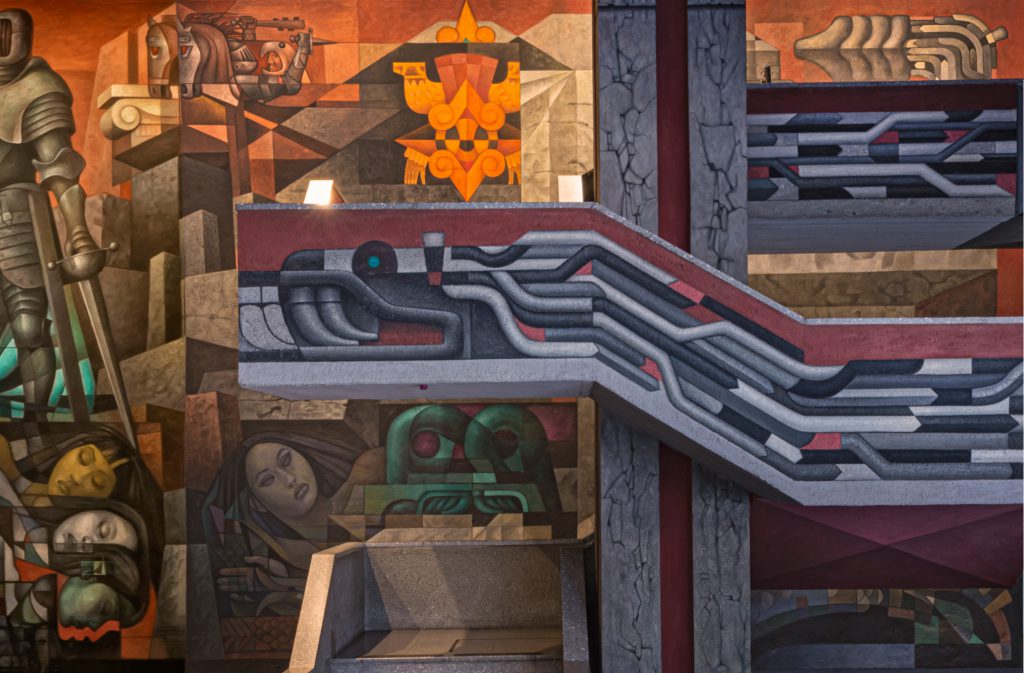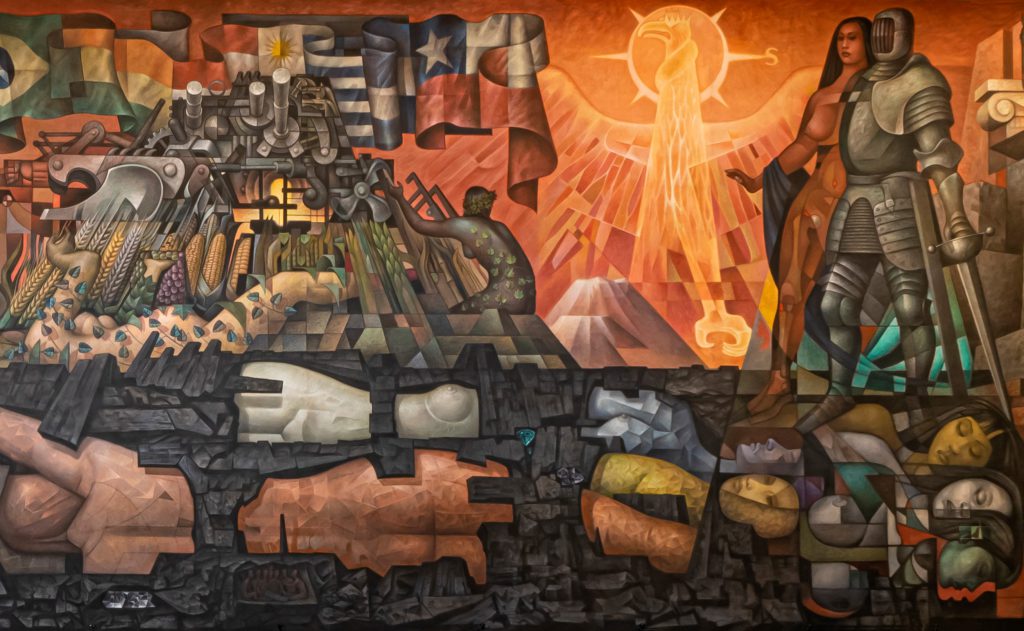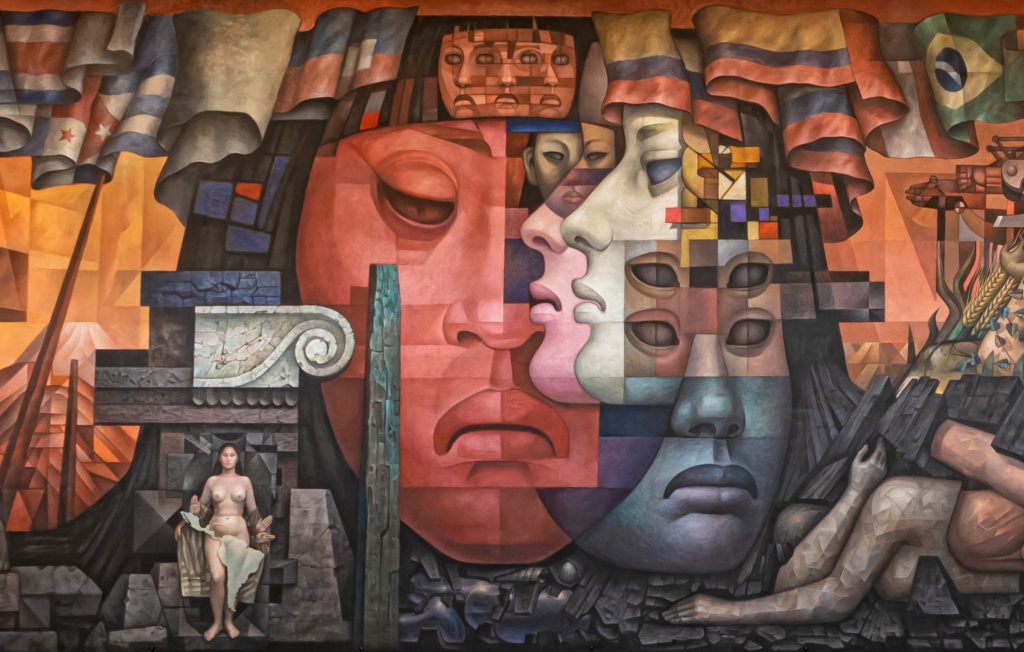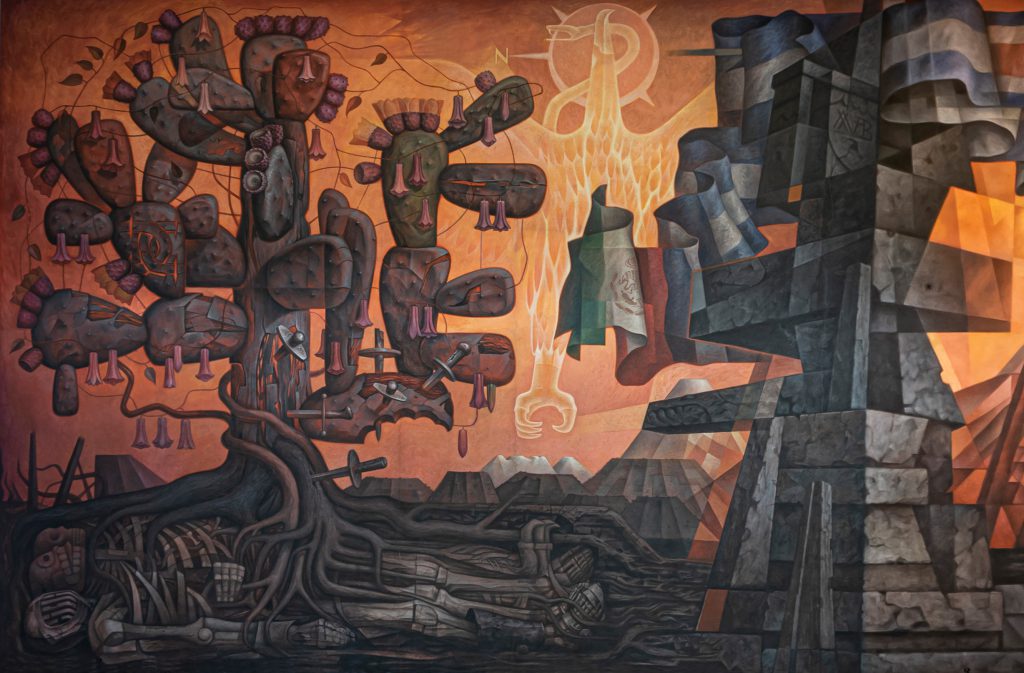This photographic copy of the mural Presencia de América Latina (Presence of Latin America) was painted by the Mexican artist Jorge González Camarena between November 1964 and April 1965. The mural graces the main lobby of the Museum of Art of the Universidad de Concepción in Concepción, Chile. The original mural is painted in acrylics on rough stucco and covers approximately 300 square meters in total. It is over 19 feet tall, so the nude figure on the left side of the painting would be the actual size of a woman. The work incorporates many symbols relating to Latin America and is meant to be read chronologically from right to left.
Symbols

At the far right of the painting are symbols related to pre-Columbian America (especially Aztecs and their predecessors). On the lower section is a woman accompanied by the green mask of Tlaloc, the god of rain. The main figure that is painted on a staircase of the museum is Quetzalcoatl, the feathered serpent from whom the Aztecs claimed descent. At the upper right is Zontemoc (“The Falling Sun”), a god symbolic of the waning of pre-Columbian culture. The conquest is represented by a mounted Spanish soldier who is fighting an eagle-man armed with a mace.
Raw Materials

Continuing to the left we see a Spanish soldier and a native woman. The muralist referred to them as The Original Couple whose union began the mixing of ethnicities in Latin America. They walk over the natural and mineral riches of the region with sleeping women representing silver, gold, iron and copper trapped in layers of jewel encrusted coal. Above them is a pregnant woman representing the fertility of the earth from whom sprouts Old World wheat and New World corn. These crops are some of the raw materials that are being fed into the machinery of industrialization.
Mixing of Ethnicities

The huge overlapping faces at the center of the mural represent the mixing of the ethnicities that make up the contemporary people of Latin America. The naked woman (who is life-sized in the actual mural) has a map of Latin America that partially covers her. Above the woman are architectural elements – a capital symbolizing the Greco-Roman contributions to Latin American culture and, to the left, blocks of solid rock in a vertical structure symbolizing native American architecture and culture.
Solidarity and Fraternity

The left side of the mural is dominated by a prickly pear cactus (a national symbol of Mexico) around which wind the vines of a copihue (a bellflower that is the national flower of Chile). This represents the solidarity and fraternity between Mexico and Chile. The cactus, however, is scarred and pierced by daggers symbolizing the historical exploitation of Latin Americans.
At the top of the mural, the flags of the different Latin American nations wave. The flags from right to left are in sequence from south to north following the geography of Latin America. Thus, the flag of Chile is at the right with a condor, the national bird, and to the far is left is the flag of Mexico next to an eagle and a serpent, important national symbols of Mexico.
The mural has become one of the main tourist attractions of Concepción. It was recognized by the Government of Chile as a National Historic Landmark under Decree Number 147 of 30 April 2009.
Sources:
Mural “Presencia de America Latina” de Jorge González Camarena. Booklet produced by Casa del Arte, Universidad de Concepción, Chile. Septiembre de 1965.
https://en.wikipedia.org/wiki/Presencia_de_América_Latina







